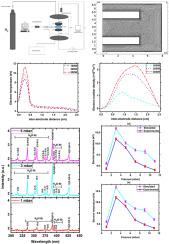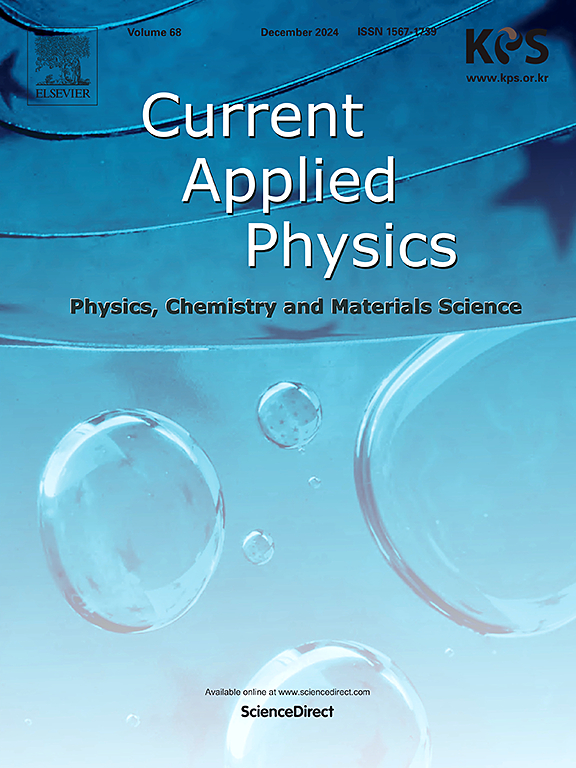平行电极辉光放电的模拟及与实验结果的比较
IF 3.1
4区 物理与天体物理
Q3 MATERIALS SCIENCE, MULTIDISCIPLINARY
引用次数: 0
摘要
本文利用COMSOL多物理场模拟和实验,深入研究了并联电极直流辉光放电系统的等离子体特性。由于氮气在等离子体氮化中广泛使用,因此选择氮气作为等离子体放电材料,以提高材料的摩擦学性能。该研究着眼于直流电源如何改变重要的等离子体参数,如电子温度和电子数密度,同时保持气体压力不变。此外,还分析了在固定直流功率条件下,不同充气压力的影响。在具有相同几何结构和输入条件的圆柱形真空室中进行了实验验证。模拟结果与实验结果的对比显示出类似的趋势,尽管模拟结果的幅度略高。这种变化可能是由于理论模型和实际等离子体行为之间的差异。基于这些观察结果,对放电系统进行了精确的压力和功率条件优化,以提高其在等离子体氮化应用中的有效性。这些发现有助于等离子体表面处理过程的更好控制和效率。本文章由计算机程序翻译,如有差异,请以英文原文为准。

Simulations of parallel electrode glow discharge and comparison with experimental results
This paper uses COMSOL Multiphysics simulations and experiments to provide insight into the plasma features of a parallel electrode DC glow discharge system. Nitrogen gas has been selected for plasma discharge due to its widespread use in plasma nitriding, which enhances the tribological properties of materials. The study looks at how DC power changes the important plasma parameters, like the electron temperature and the electron number density, while keeping the gas pressure the same. Additionally, the effect of varying gas-filled pressure was analyzed with fixed DC power. Experimental validation is carried out in a cylindrical shaped vacuum chamber with the same geometric configuration and input conditions. The comparison between simulated results and experimental outcomes shows a similar trend, although the magnitudes of simulated results are a little bit higher. This variation may be due to differences between theoretical modeling and actual plasma behavior. Based on these observations, the discharge system has been optimized for precise pressure and power conditions to improve its effectiveness in plasma nitriding applications. The findings contribute to better control and efficiency in plasma-based surface treatment processes.
求助全文
通过发布文献求助,成功后即可免费获取论文全文。
去求助
来源期刊

Current Applied Physics
物理-材料科学:综合
CiteScore
4.80
自引率
0.00%
发文量
213
审稿时长
33 days
期刊介绍:
Current Applied Physics (Curr. Appl. Phys.) is a monthly published international journal covering all the fields of applied science investigating the physics of the advanced materials for future applications.
Other areas covered: Experimental and theoretical aspects of advanced materials and devices dealing with synthesis or structural chemistry, physical and electronic properties, photonics, engineering applications, and uniquely pertinent measurement or analytical techniques.
Current Applied Physics, published since 2001, covers physics, chemistry and materials science, including bio-materials, with their engineering aspects. It is a truly interdisciplinary journal opening a forum for scientists of all related fields, a unique point of the journal discriminating it from other worldwide and/or Pacific Rim applied physics journals.
Regular research papers, letters and review articles with contents meeting the scope of the journal will be considered for publication after peer review.
The Journal is owned by the Korean Physical Society.
 求助内容:
求助内容: 应助结果提醒方式:
应助结果提醒方式:


